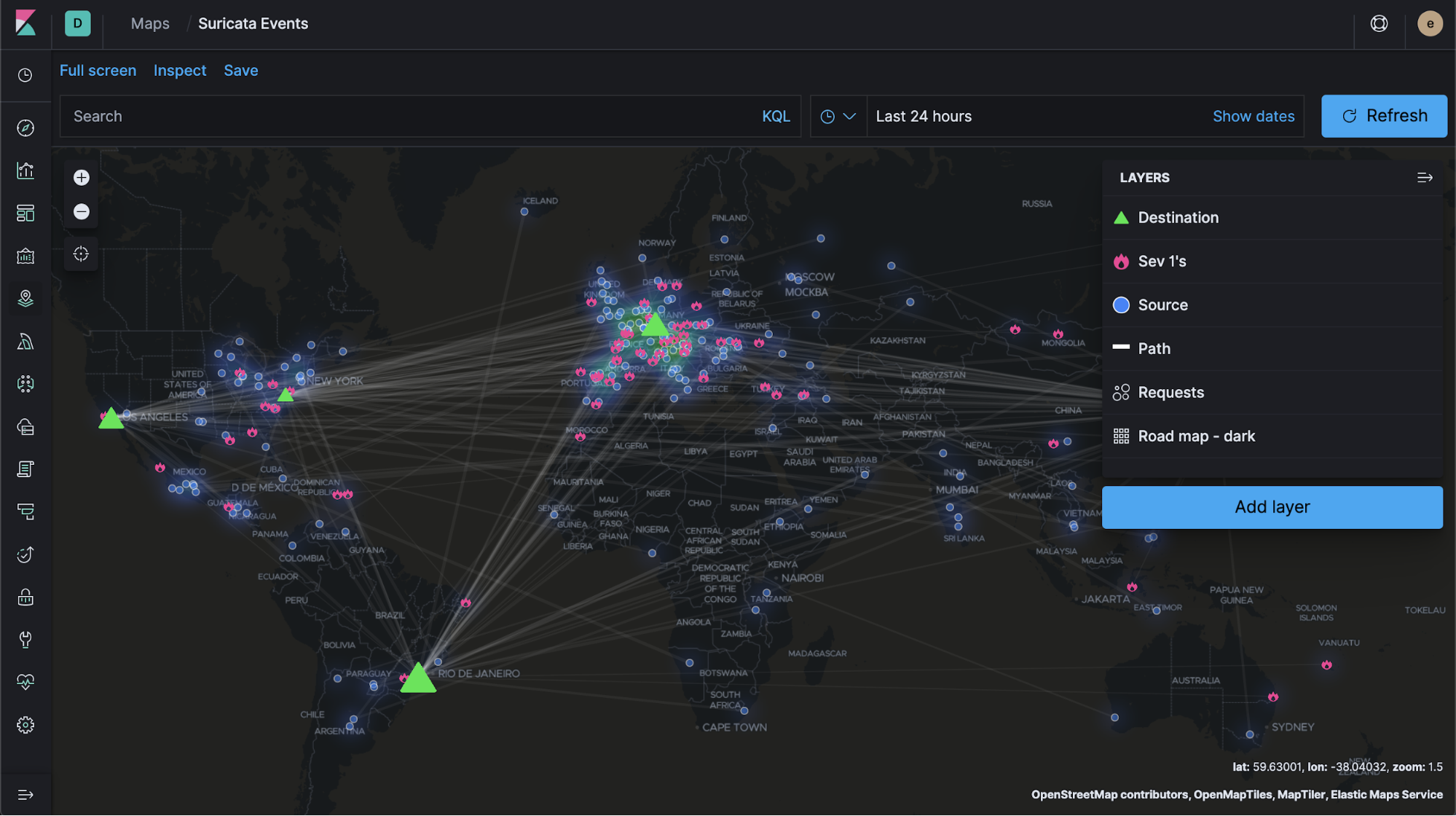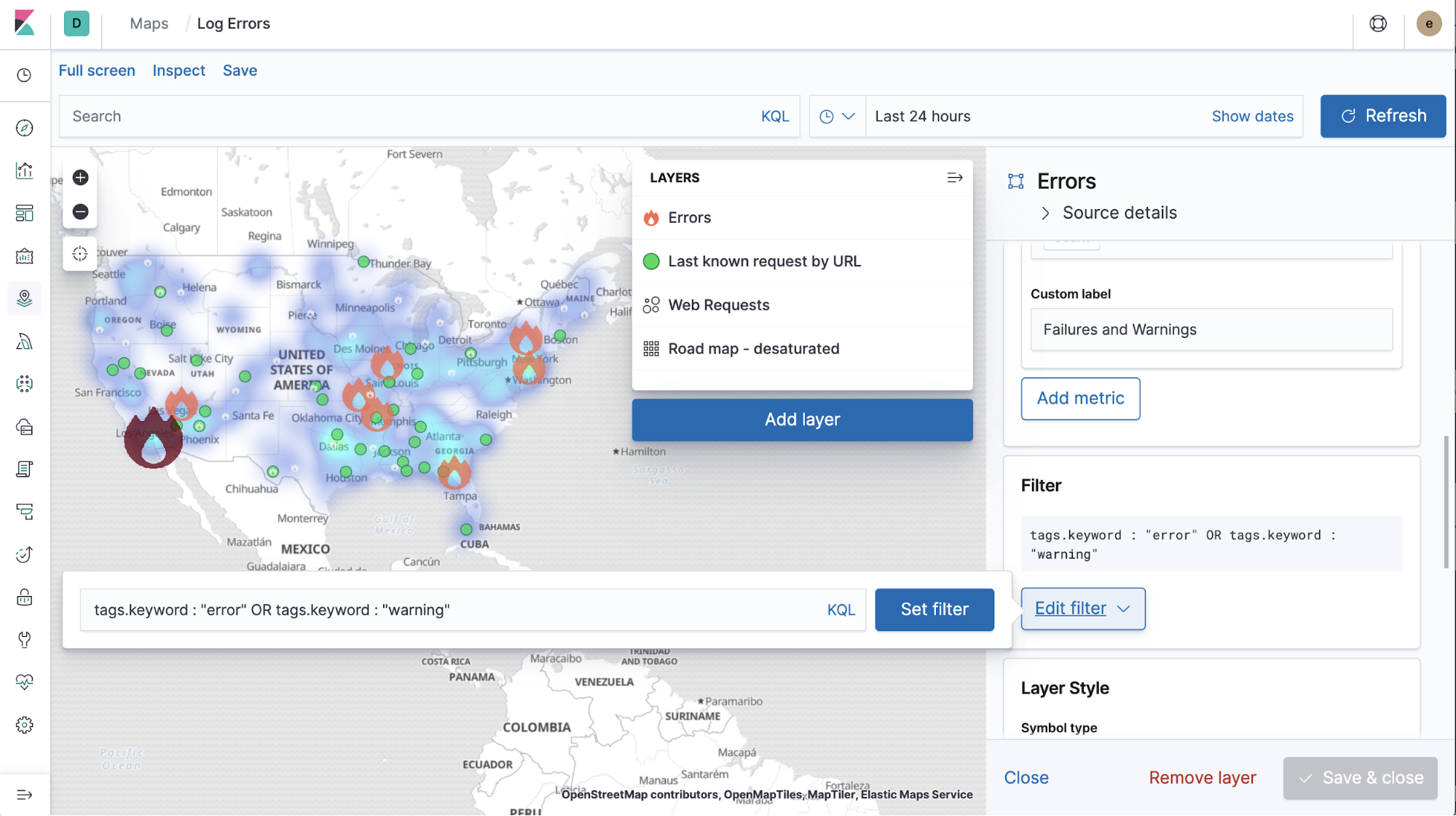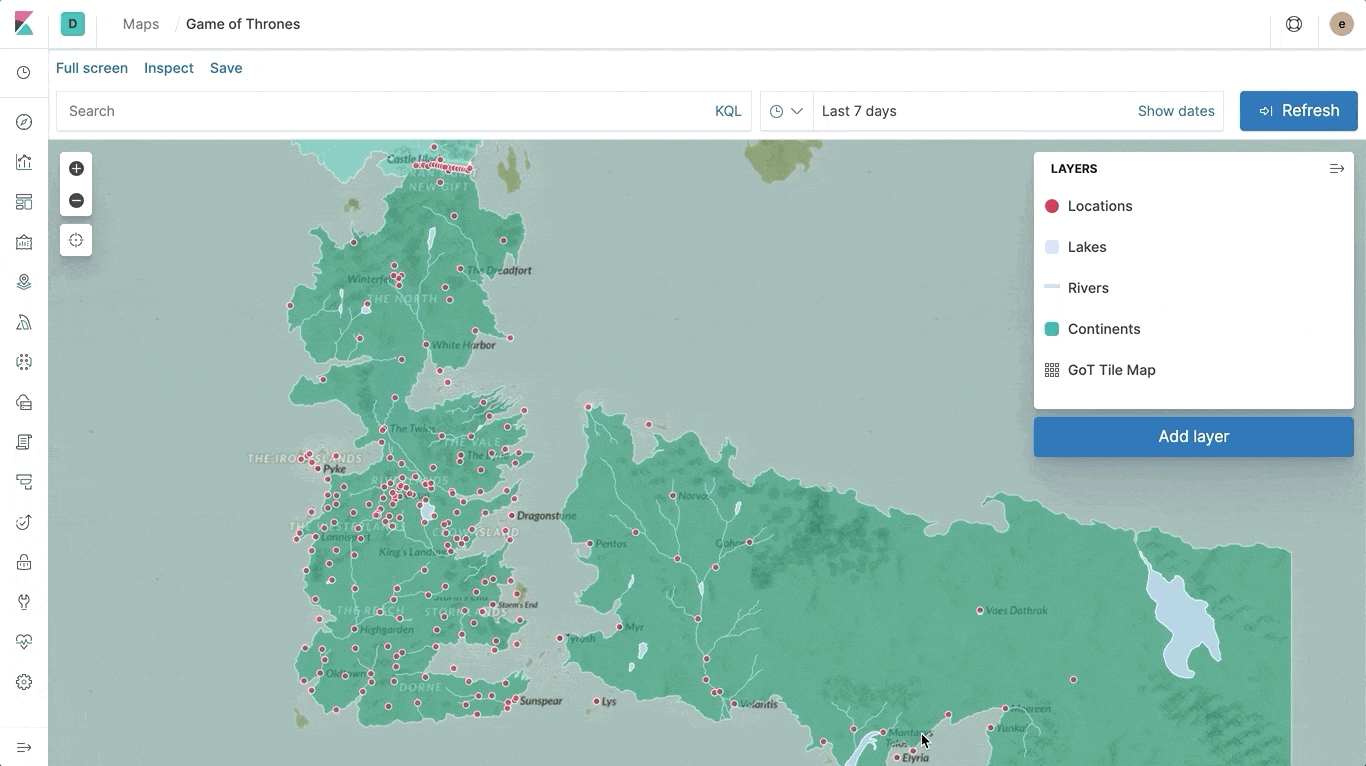Elastic Maps is now generally available
We are excited to announce that Elastic Maps is now generally available and ready to take your geospatial analysis to the next layer. Launched in beta in version 6.7, Elastic Maps is a powerful Kibana application that opens up new ways to visually explore your location data available in Elasticsearch.
Elastic Maps is included in the free, default distribution of the Elastic Stack, and users can experience it by either spinning up a cluster in Elasticsearch Service on Elastic Cloud or downloading the Elastic Stack.
Location data + search: A journey that goes way back
Whether you’re monitoring the regional performance of your application with Elastic APM, tracking the physical locations of suspicious IPs trying to breach your network through Elastic SIEM, or using logs to monitor the operational visibility of packages in near real time, location data and search go hand in hand across many use cases.
Our community has been using the Elastic Stack for their geospatial needs since the beginning (version 0.9.1!). Elasticsearch as a data store allows you to query large amounts of geo data — with relevance and speed — at scale. On the ingest side of things, both Beats and Logstash can quickly enrich your logs and metrics with geospatial information by automatically generating a physical location of an IP using the geoip processor. Kibana has always offered the ability to easily map location data and quickly correlate it with the rest of your data stored in Elasticsearch.

Over the years, Elastic has been investing heavily in our geospatial capabilities. We’ve significantly improved Elasticsearch query time, index time, storage densities, and memory utilization for geo data by modifying the underlying algorithms to use a new BKD tree structure. Elastic Maps is the natural step forward in that journey. Earlier this year, we launched a beta version of Elastic Maps. We are excited to graduate Elastic Maps to general availability status in version 7.3.
"Geospatial data is a key part of many of our use cases, and we have invested heavily in making it faster and easier over the years," said Shay Banon, founder and CEO of Elastic. "We're super excited to release Elastic Maps, a new solution that leverages our existing query capabilities and provides a more powerful, interactive, and customizable visualization layer, supporting multiple layers, zooming into individual documents, and more."
Your location data, alongside everything else
From coordinates to countries, we treat location as just another data point. This is why we felt it was extremely important for maps created in the Elastic Maps app to be embeddable in a Kibana dashboard. As of 7.2, your highly customized and multi-layered map can be added to a Kibana dashboard just like any time series chart, word cloud, or saved search. Simply draw a shape on your map to filter down and correlate location with all other attributes in your data.

Classification, custom point icons, and last known location
Since the beta, we have added several features that give users more control over the styling and interaction with their data in Elastic Maps.
Layer classification: Classify layers based on particular criteria to enable new capabilities like styling based on status (such as host uptime) or on thresholds (such as service response time).
Custom icons: Showcase points on a map with a variety of different icons wherein the size, color, and orientation can be statically or dynamically styled.
Last known location: For use cases that require tracking the most recent status, you can also opt in to show only the last known location for a given point on a layer using the Top Hits aggregation in Elasticsearch.

Upload features, shapes, and more from GeoJSON
At Elastic, we strive to make our products simple and easy to use. Our GeoJSON upload feature, a new beta feature in Elastic Maps, is very much aligned with this theme. Through direct ingestion into Elasticsearch, the feature enables map creators to drag and drop GeoJSON files enriched with points, shapes, and content into a map for instantaneous visualization.

And if you’re simply looking to add vector shapes for certain regions on a map, the Elastic Maps Service continues to add more and more hosted regions to our library (explore here) for an out-of-the-box experience.
Just getting started
While this release is a huge milestone for Elastic Maps, we’re just getting started. We will continue to invest in more robust features across the stack that will take exploration of location-based data to new levels. Whether you’re already using the stack for popular use cases such as log analytics, security analytics, or observability, or are simply exploring options for your geospatial needs, Elastic Maps is a powerful tool for your location data analysis and exploration.
Try Elastic Maps today
To get started, spin up a trial cluster on our Elasticsearch Service or install the latest version of the Elastic Stack. Already have data in Elasticsearch? Take Elastic Maps for a test drive with the latest version of the stack.
We have some great material to get you started: